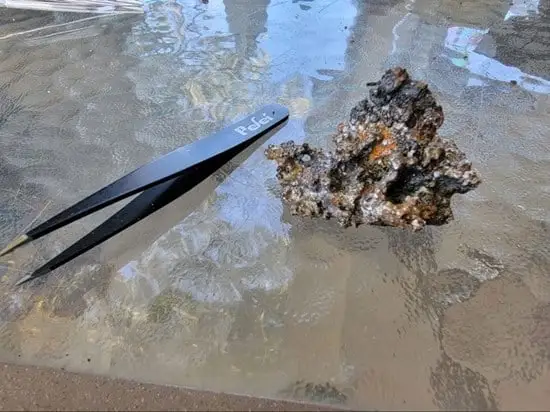John Carter on how the Legendary Lone Ranger series sheds light on the Silver Bullet Mines history
In this InvestorNews interview with host Tracy Weslosky, John Carter, CEO and Director of Silver Bullet Mines Corp. (TSXV: SBMI | OTCQB: SBMCF), delves into the unique origin story of the company and its innovative approach to mining and silver production. Carter recounted a story linking their McMorris Mine to the legendary Lone Ranger series, shedding light on the mine’s history. He explained that the author of the Lone Ranger book “actually came out to the McMorris Mine and bought silver directly from the mine, which they used to make silver bullets for promoting the Lone Ranger series.” This historical tidbit not only underscores the mine’s storied past but also serves as a testament to its long-standing significance in silver production.
Further into the discussion, Carter highlighted SBMI’s unconventional strategy towards mining and financial sustainability. With over 40 years of experience, Carter has witnessed the cyclic challenges of the sector, including the need for continuous capital raising and its dilutive effects on shareholders. SBMI’s strategy circumvents these issues by reactivating past-producing mines and utilizing existing resources to fund further exploration and development, rather than relying solely on external financing. This model is currently being applied in Arizona and Idaho, with the company already “producing silver” in Arizona and planning to use the generated revenues to bolster exploration efforts.
Furthermore, the recent strategic business alliance with Countryman Investments and the appointment of Dave Richardson to SBMI’s Advisory Board signal a significant strengthening of the company’s financial and operational capabilities.
To access the complete InvestorNews interview, click here
Don’t miss other InvestorNews interviews. Subscribe to the InvestorNews YouTube channel by clicking here
About Silver Bullet Mines Corp.
Silver Bullet Mines Corp. (SBMI) is making headway in the gold and silver production industry. SBMI recently revealed a third potential revenue stream through a partnership to process around 900 pounds of high-grade gold concentrate at its Globe, Arizona facility, benefiting from its advanced gravity circuit. Besides this, SBMI’s primary operations focus on silver extraction from the Buckeye Silver Mine and silver/gold production at its Washington Mine in Idaho, to be processed at its fully operational mill. The company recently reported promising high-grade silver findings from the Treasure Room and is working on a financing strategy for its operations. An ambitious goal is to stabilize the Treasure Room for deeper exploration. Another highlight was the successful interception of a mineral-rich zone at the Buckeye Mine, known as “Zone1,” believed to contain higher-grade silver. The company plans to continue mining this vein and refine the material at its Globe mill. Recent developments position SBMI as a leading player in silver mining, suggesting a bright future for the company and its investors.
To learn more about Silver Bullet Mines Corp., click here
Disclaimer: Silver Bullet Mines Corp. is an advertorial member of InvestorNews Inc.
This interview, which was produced by InvestorNews Inc. (“InvestorNews”), does not contain, nor does it purport to contain, a summary of all material information concerning the Company, including important disclosure and risk factors associated with the Company, its business and an investment in its securities. InvestorNews offers no representations or warranties that any of the information contained in this interview is accurate or complete.
This interview and any transcriptions or reproductions thereof (collectively, this “presentation”) does not constitute, or form part of, any offer or invitation to sell or issue, or any solicitation of any offer to subscribe for or purchase any securities in the Company. The information in this presentation is provided for informational purposes only and may be subject to updating, completion or revision, and except as may be required by applicable securities laws, the Company disclaims any intent or obligation to update any information herein. This presentation may contain “forward-looking statements” within the meaning of applicable Canadian securities legislation. Forward-looking statements are based on the opinions and assumptions of the management of the Company as of the date made. They are inherently susceptible to uncertainty and other factors that could cause actual events/results to differ materially from these forward-looking statements. Additional risks and uncertainties, including those that the Company does not know about now or that it currently deems immaterial, may also adversely affect the Company’s business or any investment therein.
Any projections given are principally intended for use as objectives and are not intended, and should not be taken, as assurances that the projected results will be obtained by the Company. The assumptions used may not prove to be accurate and a potential decline in the Company’s financial condition or results of operations may negatively impact the value of its securities. This presentation should not be considered as the giving of investment advice by the Company or any of its directors, officers, agents, employees or advisors. Each person to whom this presentation is made available must make its own independent assessment of the Company after making such investigations and taking such advice as may be deemed necessary. Prospective investors are urged to review the Company’s profile on SedarPlus.ca and to carry out independent investigations in order to determine their interest in investing in the Company.
